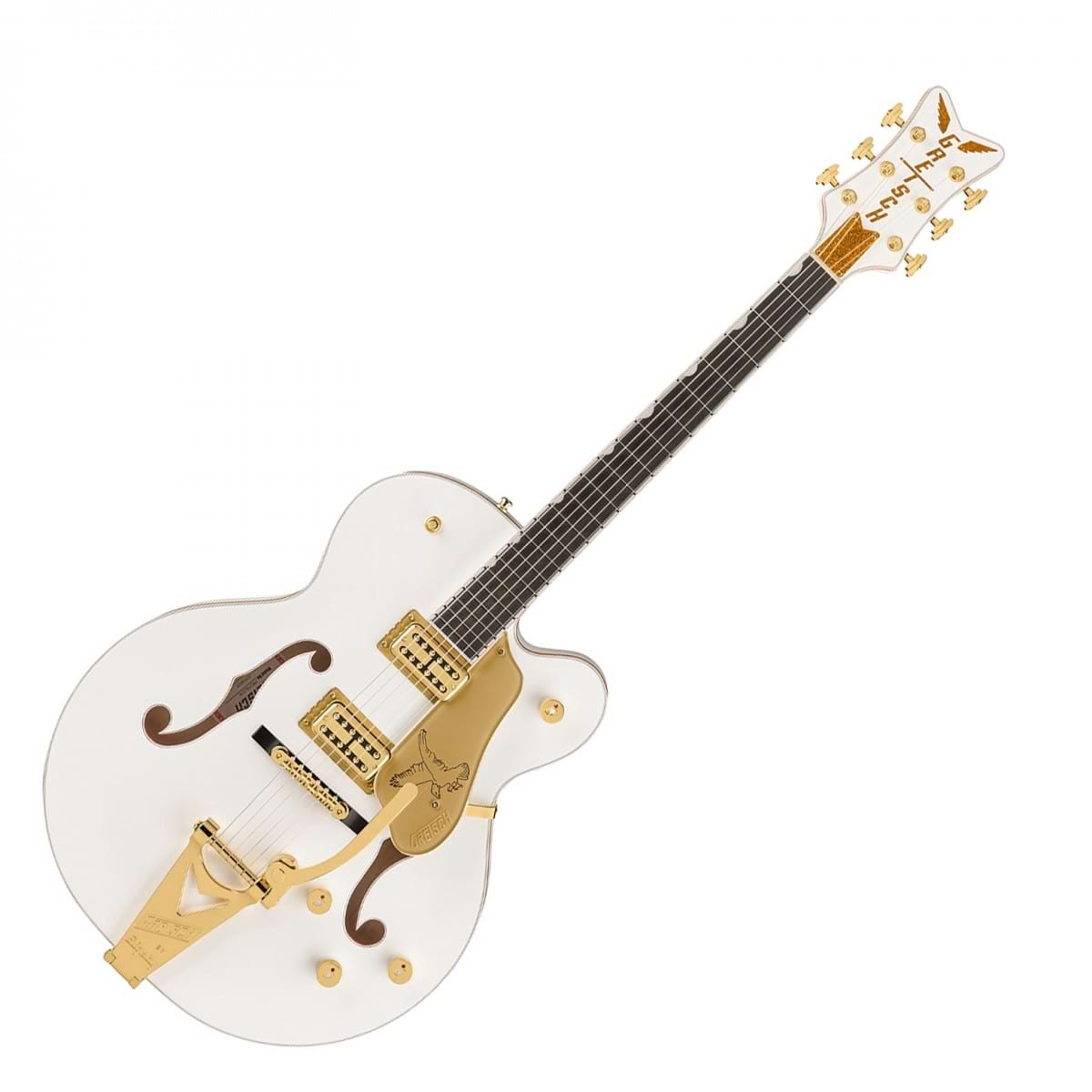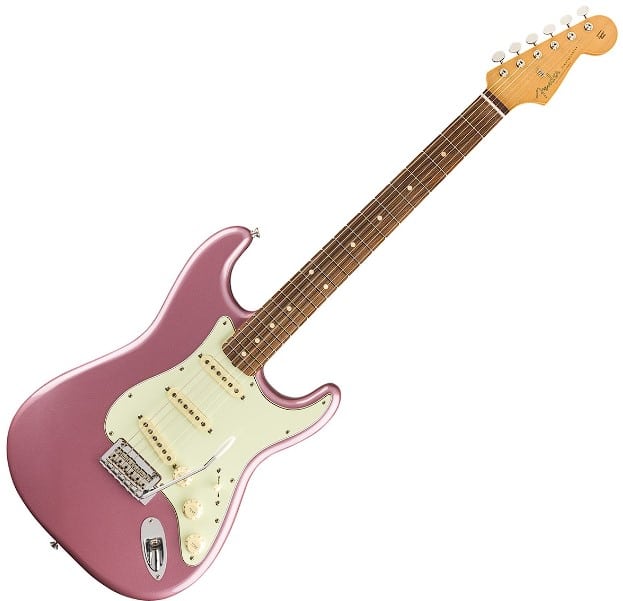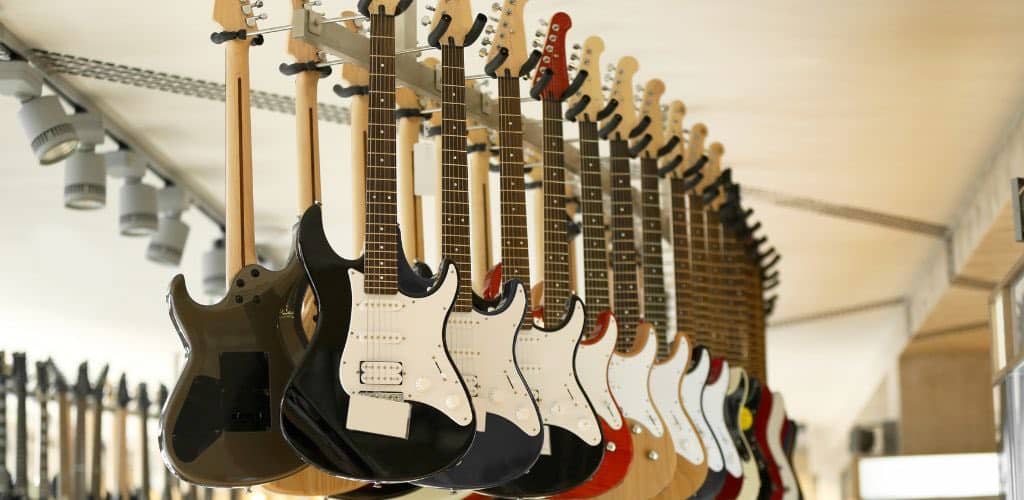Get ready to plug in and turn up the volume as we take a wild ride through the electrifying history of the electric guitar—from the hip-shaking moves of Elvis to the mind-bending solos of Eric Clapton!

This isn’t just a story about strings and wood; it’s a saga of rebellion, innovation, and unforgettable riffs that made us dance, cry, and rock out like nobody’s watching.
The Guitar's Evolutionary Journey
The origins of the guitar can be traced back to ancient Egypt around 1500 BC, where early guitar-like instruments resembling long-necked lutes were played, setting the stage for the evolution of stringed instruments.

As time progressed, the medieval lute emerged as a prominent fixture in European music, celebrated for its distinctive pear-shaped body and the rich, melodic sounds it produced.
This instrument became a staple in courtly settings, enchanting audiences with its intricate melodies and emotional depth.
The lute’s popularity not only highlighted the cultural significance of stringed instruments but also laid the groundwork for the development of the modern guitar.
Thus, from its ancient roots to its medieval prominence, the guitar’s lineage reflects a long-standing tradition of musical innovation and artistry.
From Vihuela to Classical
The Spanish vihuela played a pivotal role in the evolution of the guitar, transforming it into the baroque guitar and facilitating its spread across Europe during the Renaissance. This transition marked a significant shift in musical styles and preferences as the guitar began to gain popularity among musicians and composers alike.


The 18th and 19th centuries heralded the classical guitar era, where its refined design and expressive capabilities were embraced by influential composers such as Fernando Sor and Francisco Tárrega. Their contributions not only elevated the guitar’s status in the classical music world but also laid the foundation for modern guitar techniques and repertoire.
As the guitar continued to evolve, it solidified its place as a cherished instrument, bridging cultural divides and inspiring generations of musicians.
The 1930s Transformation of Guitar
The 1930s heralded the arrival of the electric guitar, a game-changing innovation that forever altered the landscape of music.

With its ability to amplify sound, the electric guitar unleashed a wave of energy and creativity, allowing musicians to explore new styles and techniques that were previously unimaginable.
This revolutionary instrument not only paved the way for the rise of rock ‘n’ roll but also transformed genres like jazz and blues, making them more vibrant and accessible. The electric guitar’s impact on music has been profound, solidifying its status as a cornerstone of modern musical expression.
The Electric Guitar as a Cultural Icon of the 1950s


The 1950s witnessed a rock ‘n’ roll explosion, with icons like Chuck Berry and Elvis Presley harnessing the electric guitar to define the genre and captivate audiences worldwide. Their electrifying performances and innovative riffs not only shaped the sound of rock music but also inspired countless musicians across generations.


As the electric guitar became a cultural symbol, it represented creativity, rebellion, and the spirit of musical expression. Legends such as Eric Clapton and Jimi Hendrix further elevated the instrument’s status, pushing the boundaries of technique and style.
The electric guitar’s role in rock ‘n’ roll solidified its place as an enduring icon of musical artistry and cultural transformation.
The Guitar's Evolution and Its Role as a Universal Connector
Modern innovations in guitar technology, such as digital modeling amps and effects pedals, have significantly expanded the instrument’s sonic possibilities, allowing musicians to explore a vast array of sounds and textures.
These advancements enable players to replicate classic tones or create entirely new ones, enhancing their creative expression and performance capabilities.

The guitar’s evolution is not just about technological progress; it also reflects its enduring legacy as a powerful connector of people across genres, eras, and cultures.
From blues to rock, jazz to pop, the guitar has served as a universal language, uniting diverse musical styles and communities. This rich tapestry of influence showcases the instrument’s ability to transcend boundaries and foster collaboration among artists.
3 GUITARS WE KNOW YOU'LL SURELY LOVE
Gretsch Falcon Hollow Body with String-Thru Bigsby and Gold Hardware

FEATURES: Smooth Bigsby tremolo with string-thru system for easy restringing
OTHER INFO: Stylish white finish with gold accents for standout aesthetics.
- High-quality construction with beautiful aesthetics
- Warm, rich tone from hollow body design
- Easy string changes with string-thru Bigsby
- Higher price point
- Large body may not suit all players
When you click ‘Check Price’, you’ll see there are loads of great places to buy this item. Our personal favorite is Sweetwater for the US, and Thomann and Gear4Music for the UK & Europe.
They are the largest music retailers, with excellent customer service, competitive prices, really fast shipping, and the longest guarantees.
The professional musician who wrote this article combined many things,
from the product build, manufacturer’s reputation through to feedback
from other users, to create our famous TedScore™.
Ibanez RGA42FM, Blue Lagoon Burst Flat

PERFECT FOR: Beginner
FEATURES: Fingerboard Radius: 400mmR
OTHER INFO: Nut Width: 43mm
Ibanez RGA42FM, Blue Lagoon Burst Flat
- Fixed bridge provides tuning stability.
- Ideal for rock and metal performers.
- Visually appealing design.
- Lightweight construction.
- High-quality metallic components.
- Comes well set up and is easy to play straight out of the box.
- Can intonate well with heavier gauge strings.
- Possible minor manufacturing defects.
- Body can be easily damaged due to its light build.
- Produces flat high-gain sounds, may need modification with better pickups.
- Price may be too high for its value, especially if you are looking for high-gain tones.
- Fingerboards may require more maintenance than some other materials.
When you click ‘Check Price’, you’ll see there are loads of great places to buy this item. Our personal favorite is Sweetwater for the US, and Thomann and Gear4Music for the UK & Europe.
They are the largest music retailers, with excellent customer service, competitive prices, really fast shipping, and the longest guarantees.
The professional musician who wrote this article combined many things,
from the product build, manufacturer’s reputation through to feedback
from other users, to create our famous TedScore™.
Fender Vintera 60s Mod Stratocaster PF, Burgundy Mist

FEATURES: Fingerboard Material: Pau Ferro
OTHER INFO: Deluxe Gig Bag included
- Genuine representation of the era's rock sound.
- Visually appealing Pau Ferro fingerboard.
- Indicates good quality control and attention to detail in shipping.
- Praises smooth and responsive playability.
- Professional Setup
- Slightly higher price point
- Limited color options
When you click ‘Check Price’, you’ll see there are loads of great places to buy this item. Our personal favorite is Sweetwater for the US, and Thomann and Gear4Music for the UK & Europe.
They are the largest music retailers, with excellent customer service, competitive prices, really fast shipping, and the longest guarantees.
The professional musician who wrote this article combined many things,
from the product build, manufacturer’s reputation through to feedback
from other users, to create our famous TedScore™.
The Timeless Legacy of the Electric Guitar:
A Journey of Influence and Unity
The journey of the electric guitar, from its ancient beginnings to today’s modern designs, shows just how much it has influenced music and culture.

This instrument has not only shaped different music styles but also brought together people from various backgrounds, breaking down barriers and encouraging teamwork.
From the beautiful sounds of the medieval lute to the exciting riffs of rock stars, the guitar has changed over time, inspiring many musicians to share their creativity.
As we look back on its rich history, we see the electric guitar as a symbol of change, creativity, and self-expression that will keep inspiring future generations. In the end, the guitar remains a beloved instrument that captures the essence of music and brings us all together.










